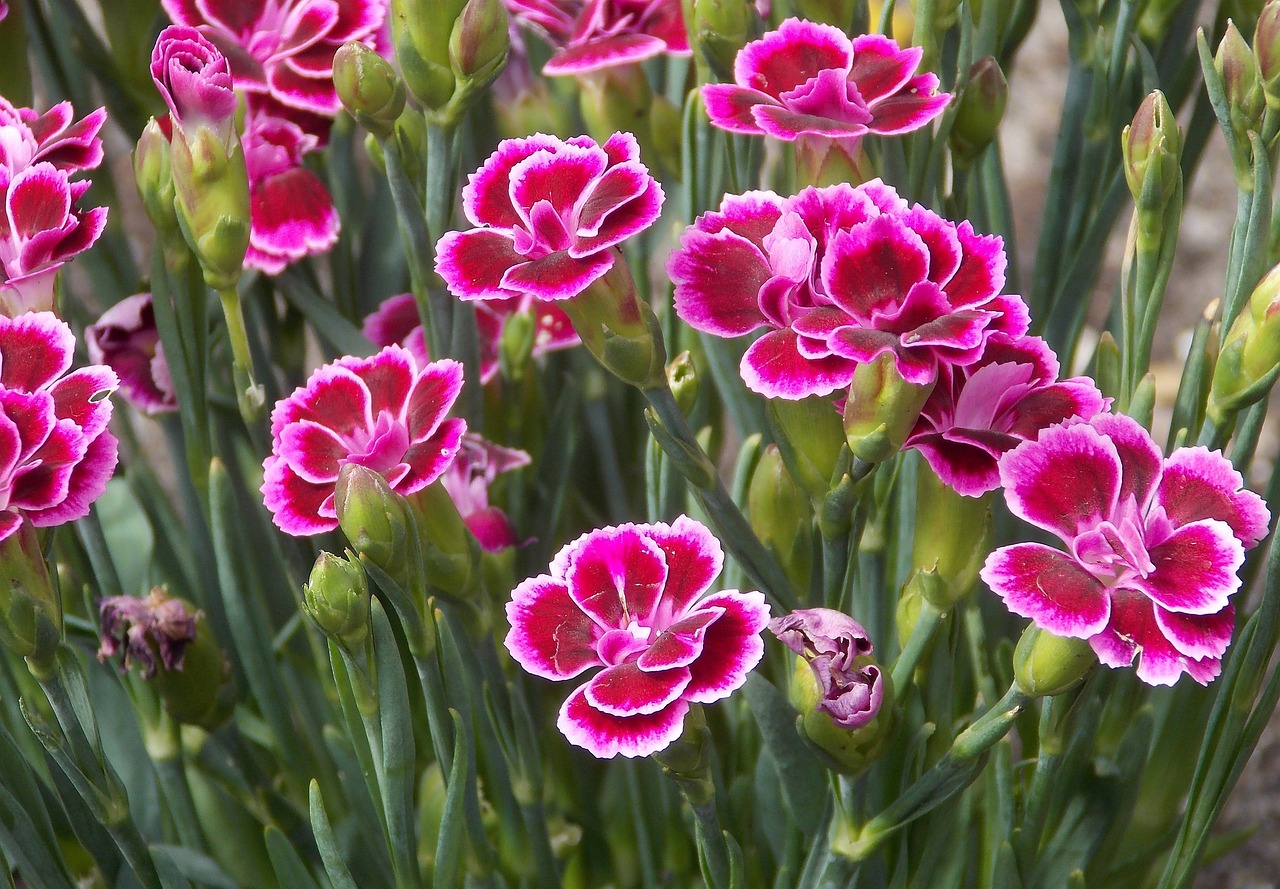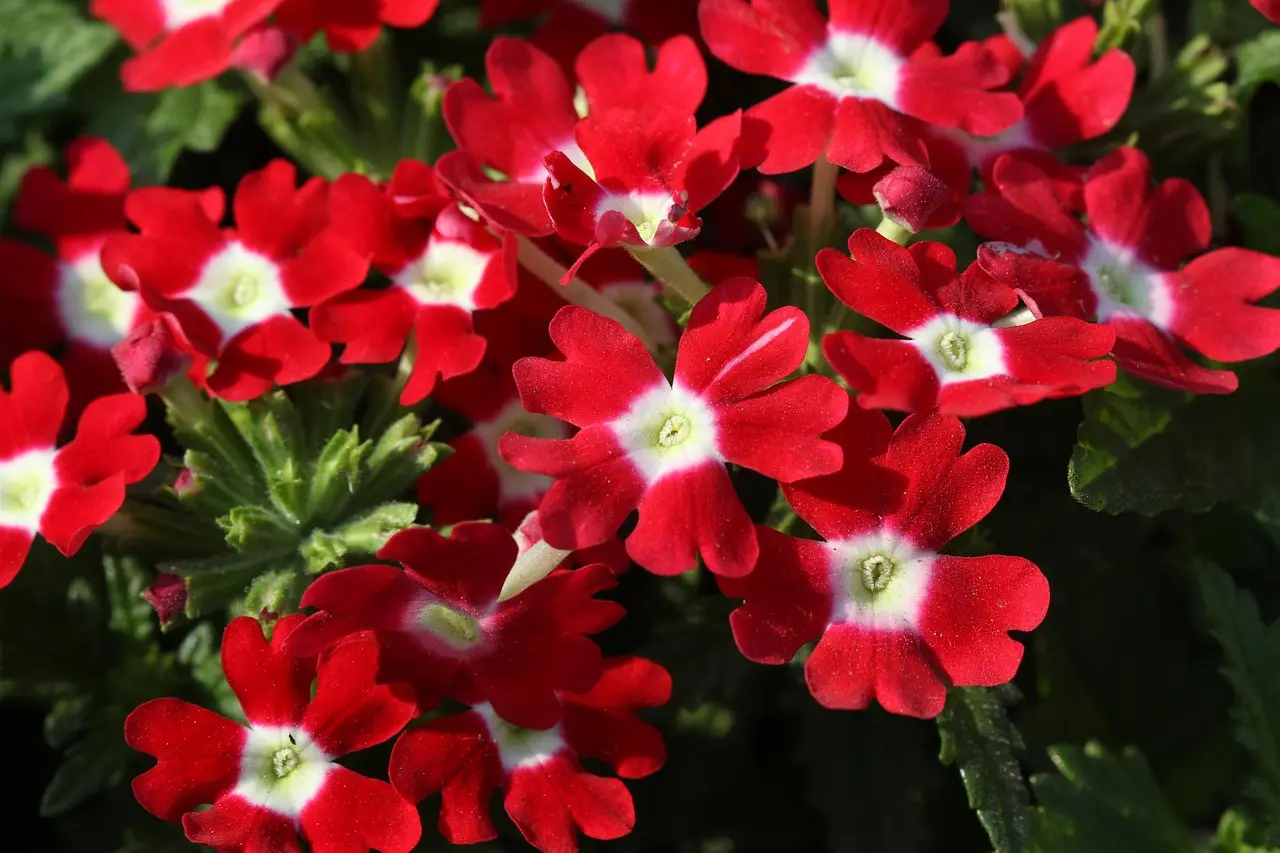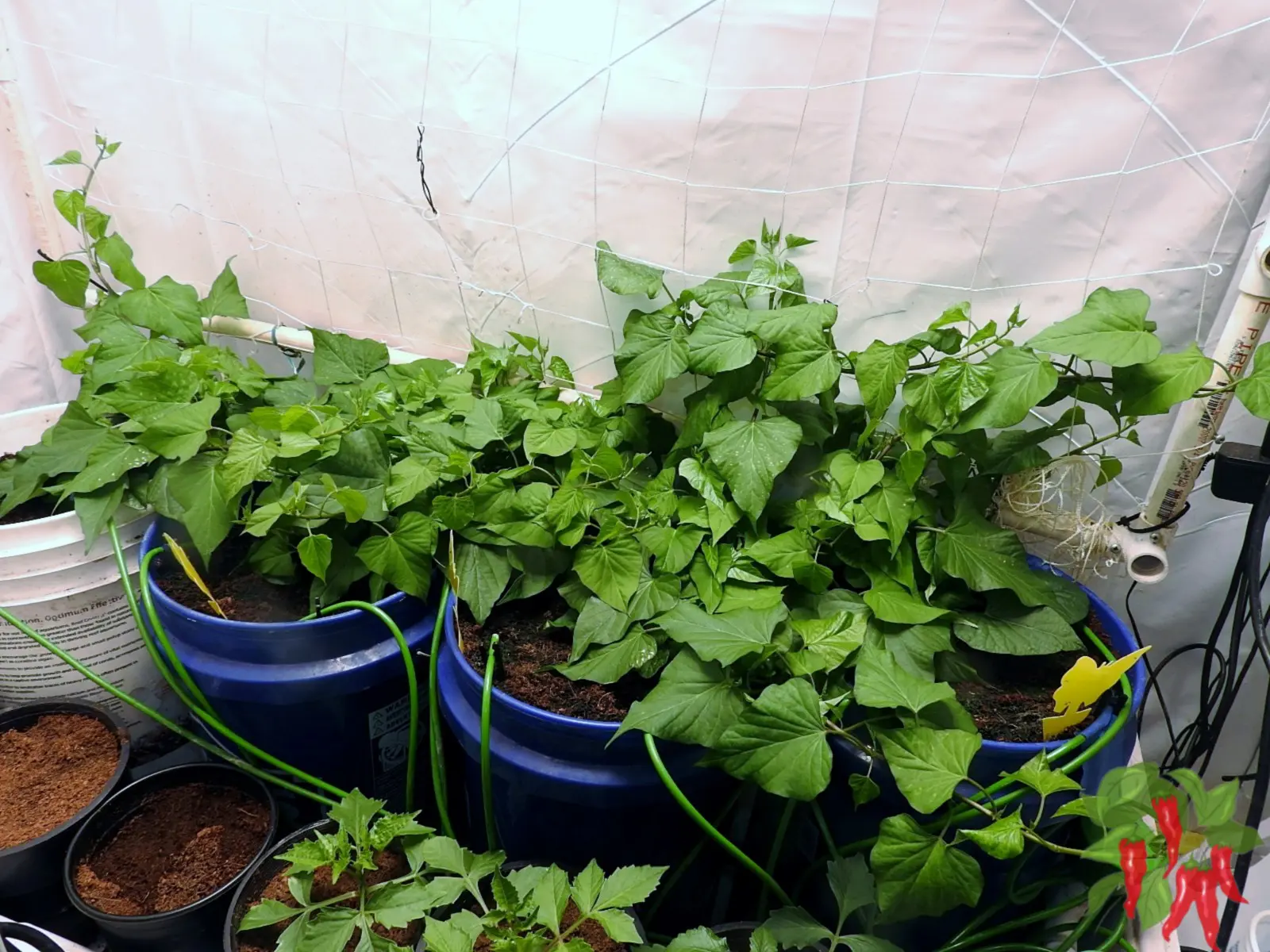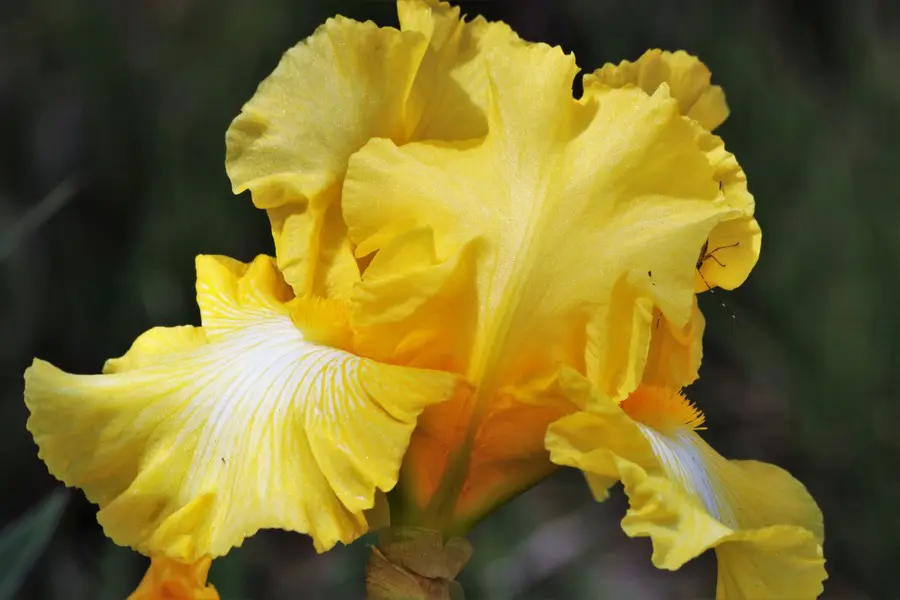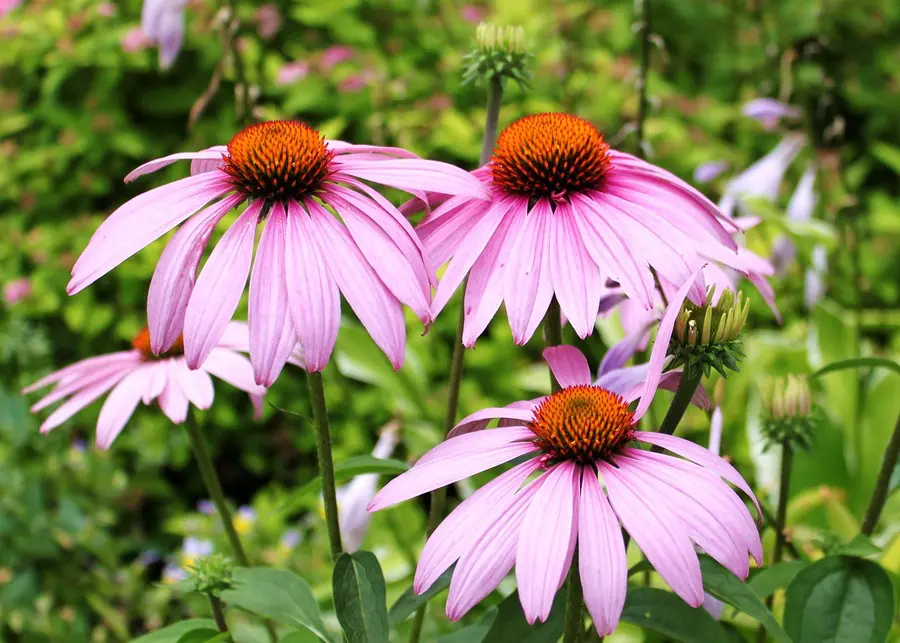This post contains affiliate links. If you buy something from one of our links we may earn a commission. Thanks
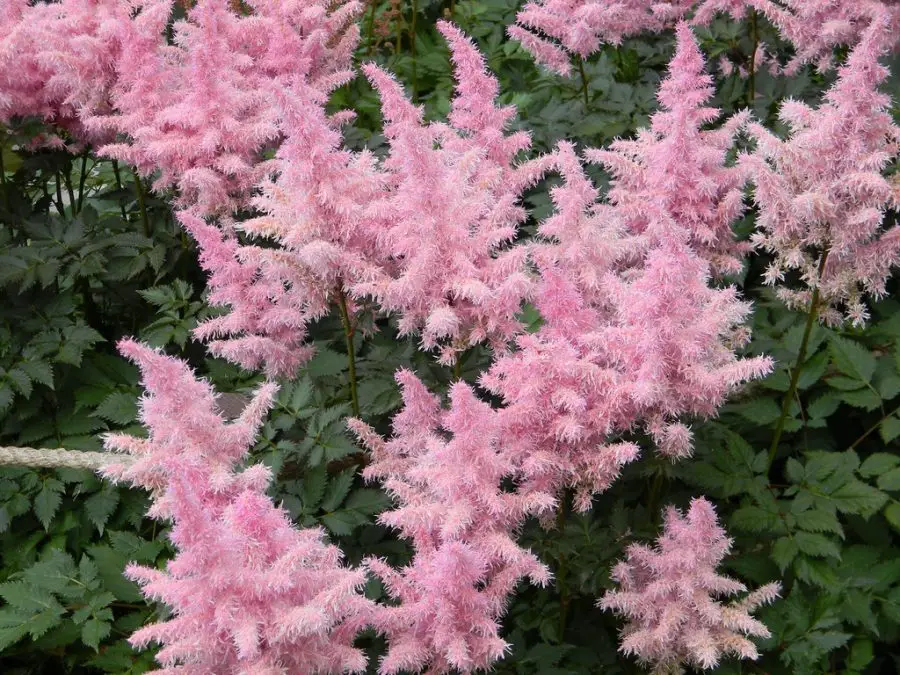
Discover the joy of growing Astilbe in pots! This guide unveils all you need to know about nurturing these shade-loving perennials right on your patio.
To grow Astilbe in pots, use a container with drainage holes and fill it with a mix of loam, peat moss, and compost. Plant the rhizomes 1-2 inches deep and water thoroughly. Position the pot in a partially shaded area. Keep the soil consistently moist, but not waterlogged. Fertilize monthly during the growing season for best results.
Welcome to the wonderful world of Astilbe in pots. This delightful perennial, known for its vibrant colors and feathery plumes, brings life to shady spots in your garden and beyond.
Picture your patio or balcony adorned with pots filled with Astilbe, transforming those spaces into magical, woodland-like corners.
Doesn’t that sound inviting? Whether you’re a seasoned gardener or a newbie just dipping your toes in the world of container gardening, this guide is your all-in-one resource for growing Astilbe successfully in pots. Let’s dig in!
Introduction: Astilbe In Pots
Say hello to Astilbe in pots, a topic brimming with captivating insights for gardening enthusiasts!
This charming perennial is known for its ease of growth and striking colors, making it an excellent choice for container gardening.
In this comprehensive guide, we’ll take you through everything from a brief overview of Astilbe to its suitability for pots.
As we progress, we’ll delve into various Astilbe types, planting tips, care essentials, common problems, and suitable varieties for pots.
Plus, we’ll discuss companion plants and provide answers to frequently asked questions.
So, whether you’re a seasoned green thumb or a budding gardener, this journey through the world of potted
Astilbe promises to be both informative and inspiring. Let’s get started!
A brief overview of Astilbe
Let’s kick things off with a quick chat about Astilbe.
Picture this: soft, fern-like foliage, topped with lush plumes of vibrant flowers and that’s Astilbe for you!
Originating from East Asia, this perennial is a true showstopper in any garden thanks to its striking colors which range from snowy white to fiery red and even deep purple.
Blooming mainly in summer months and early fall, Astilbe isn’t just a pretty face; it’s also known for being incredibly hardy.
This tough beauty can handle shade quite well, and it’s perfect for those tricky parts of your garden where many other plants shy away.
Why Astilbe is suitable for pots
Now, let’s talk about why Astilbe and pots are a match made in gardening heaven.
Firstly, Astilbe’s compact size makes it a great candidate for pot culture.
The plant typically grows to about 2-3 feet, making it perfect for containers without causing it to feel confined.
Moreover, Astilbe in pots is ideal for balconies, patios, or any outdoor area where space is a bit limited.
Pots also offer the advantage of mobility. You can shift your Astilbe around to find that perfect balance of light and shade.
Plus, if you live in a colder region, it’s easier to bring potted Astilbe indoors during harsh winters.
And let’s not forget, a beautiful Astilbe can truly spruce up your indoor space as well!
So, whether you’re looking to jazz up your outdoor space or brighten your home, Astilbe in pots is the way to go.
Basics of Astilbe
Alright, now that we’ve had a taste of why Astilbe is such a rockstar in the gardening world, let’s get into the nitty-gritty, the basics of Astilbe care.
This won’t be a dull science lesson, promise! Instead, picture it as getting to know a new friend a bit better.
We’ll talk about its preferences, like how it loves a bit of shade and well-drained soils.
We’ll also touch on its care routine, the do’s and don’ts, and how to keep it healthy and happy.
So, buckle up and get ready to dive deep into the world of Astilbe. You’ll come out the other side a bit more green-thumbed and ready to bring some Astilbe magic to your space!
Common Name and Types of Astilbe
Astilbe, isn’t it a fun word to say? It might surprise you to learn that it goes by a few other names too, like False Goat’s Beard or Feather Flower.
As for types, there are so many, each with its own charm. Fanal, for example, is known for its deep red flowers, while Bridal Veil boasts graceful, white blooms.
Characteristics of Astilbe
Astilbe is a bit of a show-off, in the best possible way.
Its feathery, plume-like flowers and fern-like foliage make it a stunner in any garden.
It’s not just about looks though; Astilbe is also pretty hardy, and once settled, requires minimal care.
Is Astilbe a Perennial?
The short answer? Yes! Astilbe are hardy perennials, coming back to dazzle you year after year.
It’s the friend who always shows up, and in the gardening world, that’s a huge plus.
Astilbe Colors
Ready for a color parade? Astilbe comes in a delightful variety of shades, from whites and pinks to deep purples and reds.
It’s like having a rainbow at your fingertips!
Astilbe Height and Spread
On average, Astilbe grows to about 2-4 feet tall and spreads about 1-2 feet.
It’s perfect for adding that touch of height and lushness without overwhelming other plants in your pot.
Astilbe Flowering Time
Astilbe has a bit of a flair for dramatic timing. Typically Astilbe flowers in late spring to early summer when many other plants are taking a break, so it’s ideal for keeping your garden show going!
Do Astilbe Spread?
Astilbe does spread but in a polite and manageable way.
It slowly expands its clump but won’t run wild. If it gets a bit too cozy, you can easily divide and replant it.
Astilbe Hardiness Zone
Astilbe is quite adaptable and thrives in USDA hardiness zones 4 through 9.
It enjoys a bit of cold and can handle frost, which means it’s ready to hang out with you, whether you live in milder coastal areas or experience harsh winters.
Pruning and its effects:
Pruning Astilbe isn’t just about aesthetics. It’s more like a rejuvenating spa session for your plant, encouraging healthier growth and abundant blooming in the following season.
So, when the flowering ends, don’t hesitate to trim back those spent blooms and witness your Astilbe bounce back with even more vitality!
Planting Astilbe in Pots
Welcome to your new adventure: Planting Astilbe in pots!
Now that we’re familiar with this feather flower, let’s get our hands a bit dirty and guide it into its new home.
Whether you’re a seasoned gardener or just dipping your toes into the plant world, planting Astilbe in pots is an engaging and rewarding process.
We’ll go step by step, ensuring your new Astilbe plants thrive in their potted environment.
Sit back, grab your gardening gloves, and let’s get started!
When to Plant Astilbe
Timing is everything in gardening and planting Astilbe is no exception.
Ideally the best time to plant Astilbe in early spring or fall.
These cooler seasons give the Astilbe roots a chance to establish themselves before the heat of summer or the chill of winter.
Ideal Conditions for Planting
Astilbe thrives under certain conditions, which we’ll need to recreate in the pot.
Firstly, a pot with good drainage is the most important thing as Astilbe doesn’t like to sit in water.
A location with dappled sunlight or partial shade is another non-negotiable.
Astilbe: Sun or Shade?
Astilbe is a shade-loving plant, but it doesn’t mind a bit of morning or late afternoon sun.
However, do keep it out of harsh, direct full sun, especially during peak hours. This might scorch the leaves and stress the plant.
Soil Requirements – Using Coco Coir and Perlite
For soil, Astilbe loves rich, well-draining soil. We’ll achieve this by using a mix of coco coir and perlite.
Coco coir retains water, keeping the soil moist without becoming waterlogged.
Perlite, on the other hand, enhances drainage, preventing the roots from sitting in water and developing rot.
Steps to Plant Astilbe in Pots
• Choose a pot with adequate drainage holes.
• Fill the pot with a mixture of coco coir and perlite.
• Make a hole about as deep as the root ball of your Astilbe.
• Place your Astilbe in the hole and gently fill in around it with your soil mix.
• Water well and place in a location with dappled sunlight or partial shade.
How to Plant Astilbe Roots
When planting Astilbe roots, dig a hole that’s about twice as wide and equally as deep as the root ball.
Position the roots in the hole, ensuring that the top of the root ball is level with the soil surface.
Gently backfill the hole, firming the soil around the plant. Don’t forget to give your newly potted Astilbe a good watering!
Caring for Astilbe in Pots
Bringing home an Astilbe is like starting an exciting new journey, and each step of the way is an opportunity to learn and grow together.
As we venture into the nurturing realm of potted Astilbe care, we’ll explore all the vital elements to keep this radiant bloomer happy and healthy.
From the nuances of watering and fertilization to understanding the plant’s unique needs throughout different seasons, we’ll arm you with all the knowledge you need to become the best Astilbe companion possible.
Ready to dive in? Let’s kickstart this rewarding venture and explore the fascinating world of caring for Astilbe in pots!
A. Water and fertilizer requirements: Astilbe is like that friend who loves a regular catch-up over a cup of coffee.
It thrives with consistent, but not excessive, watering. And when it comes to feeding, balanced slow-release fertilizer during the growing season will give your Astilbe all the nutrients it needs to flourish.
B. Mulching and its benefits: Consider mulch as Astilbe’s favorite cozy blanket.
Not only does it help maintain soil moisture, but it also keeps the roots cool and wards off weeds.
Organic mulch even enriches the soil as it decomposes. So, a little mulching could go a long way in keeping your Astilbe content!
C. Dividing Astilbe for growth: While Astilbe is quite a peaceful plant, it enjoys a bit of space.
Dividing it every 3-4 years not only prevents overcrowding but also boosts its vigor.
It’s like giving your Astilbe a little more room to dance!
Dividing Astilbe step by step
Let’s break down the process of dividing Astilbe into simple, manageable steps.
Choose the Right Time: Astilbe is best divided in early spring or late summer.
This gives the plant plenty of time to settle into its new location before the heat of summer or the cold of winter.
Prepare the New Location: Before you start the division process, prepare the new pot or garden spot where you will be placing the divided Astilbe.
The soil should be well-draining and rich in organic matter. If it’s a pot, ensure it has sufficient drainage holes.
Remove the Astilbe from its Current Location: Gently dig around the base of the Astilbe, taking care to keep as much of the root ball intact as possible. Lift the plant out of the ground or its pot.
Identify Division Points: Look at the root system and identify natural division points. These are places where the plant has multiple stems or shoots.
Divide the Astilbe: Using a clean, sharp garden knife or spade, cut the root ball into sections.
Each section should have at least one growing point or bud and a good amount of roots.
Plant the Divisions: Plant each division at the same depth it was originally growing.
If you’re planting in a pot, ensure it’s large enough to accommodate the root system and provide room for growth.
Fill in around the roots with soil, firming gently to remove air pockets. Make sure your young plants sit at the same level of the soil line they grew in before.
Water Thoroughly: After planting, water each division well. This helps to settle the soil around the roots and reduces transplant shock.
Set new plants in shady locations as they establish themselves.
Care for the Newly Planted Astilbe: Keep the soil consistently moist, but not waterlogged.
Astilbe prefers a bit of shade, so consider this when choosing a spot for your divided plants.
Remember, dividing perennials like Astilbe not only helps control the size of the plant, but it’s also a great way to multiply your plant stock. Happy dividing!
Starting Astilbe from seeds step by step
Astilbe seeds: Starting Astilbe from seeds is a real testament to patience.
The seeds require cold stratification, and the process can be quite lengthy.
But seeing those tiny seeds grow into beautiful plants is undoubtedly a rewarding experience!
Let’s go through the steps to start Astilbe from seeds:
Seed Preparation: Astilbe seeds have a hard outer shell, so they benefit from a process called stratification.
This involves chilling the seeds to mimic winter conditions, which helps to break dormancy.
To stratify Astilbe seeds, place them in a sealed plastic bag with slightly moistened sand or peat moss and store in the refrigerator for about 4-6 weeks.
Sowing Seeds: After the stratification period, it’s time to plant your seeds. Fill a tray or pot with a good quality, well-draining seed starting mix.
Moisten the mix, then sprinkle the Astilbe seeds on top, pressing them lightly into the surface but don’t cover them completely as they need light to germinate.
Proper Environment: Place the seed tray or pots in a warm location with bright, indirect light. Keep the soil consistently moist, but avoid overwatering.
Germination: Astilbe seeds can take anywhere from 15 to 30 days to germinate, so be patient. Once the seedlings have a couple of sets of true leaves, they’re ready to be transplanted into individual pots.
Transplanting: When the seedlings are large enough to handle, carefully transplant each one to its own pot. Continue to provide bright, indirect light and keep the soil moist.
Acclimation: Once the risk of frost has passed, begin acclimating your seedlings to outdoor conditions. Start with a couple of hours a day, gradually increasing the time spent outside over a week or two.
Planting Out: Choose a spot in your garden that receives part shade and has rich, well-draining soil. Plant your Astilbe seedlings at the same depth they were growing in their pots.
Remember, growing Astilbe from seed can be a rewarding experience, but it does require patience.
Not all seeds will germinate, and those that do will take several years to reach maturity.
But with time and care, you’ll be rewarded with beautiful, feathery plumes that add texture and color to your garden. Good luck!
Troubleshooting Common Problems
You’ve been lovingly caring for your Astilbe, but every so often, some issues might still pop up.
It’s as if your plant has caught a cold and needs a little extra care. In this section, we’ll become the plant detectives, exploring common problems that Astilbe in pots may encounter.
We’ll dive into signs of trouble, decode what your plant might be trying to tell you, and offer practical remedies.
Think of it as a handy guide to getting your green friend back on track.
Now, let’s dive into troubleshooting and turn those plant woes into plant wows!
Common pests and diseases
Ah, the small, uninvited guests and ailments that could give our Astilbe some trouble!
From pesky aphids to fungal diseases, Astilbe isn’t immune to common plant problems.
Aphids are little insects that suck the sap out of plants and can multiply quickly, causing visible damage.
Additionally, Astilbe can also be affected by diseases like powdery mildew, which makes your plant look as if it has been dusted with flour, or leaf spot, which causes tiny brown patches on the leaves.
Finally, root rot could set in if your Astilbe is left in waterlogged soil for too long.
Solutions to these problems
Here’s the good news: most of these problems are manageable.
If aphids decide to throw a party on your Astilbe, a strong spray of water or an application of insecticidal soap or neem oil usually convinces them to find another place to hang out.
For fungal diseases, removing the affected leaves and ensuring good air circulation around your plant will help keep these issues at bay.
A homemade baking soda solution at 1 tablespoon per gallon can help control powdery mildew.
If root rot has set in, it’s a bit trickier. You may need to repot the plant, removing as much of the rotted root as possible and ensuring your pot has good drainage for the future.
But remember, every plant issue is an opportunity to learn and grow as a plant caregiver!
Astilbe Varieties Suitable for Pots
Alright, let’s get into the fun part: picking the right Astilbe for your pot!
Imagine it, your patio, balcony, or indoor space coming alive with vibrant feathery blooms.
Now, while all Astilbe are pretty, not every variety is best suited for pot culture.
That’s where this section comes in. We’re about to delve into the world of Astilbe varieties that feel right at home in containers.
From compact ones perfect for your windowsill to slightly larger types that’ll add a dash of color to your outdoor space, we’re going on a little exploration.
By the end of this, you’ll have a shortlist of pot-friendly Astilbe that you can’t wait to get your hands on! Let’s dive in, shall we?
Brief Description of Each Variety
‘Bridal Veil’ (Astilbe x arendsii ‘Bridal Veil’): With its pristine white plumes, ‘Bridal Veil’ brings elegance to any space.
It’s a medium-sized variety, reaching about 20 to 24 inches tall. A pot full of these makes for a classic, timeless display.
‘Pumila’ (Astilbe chinensis ‘Pumila’): This petite beauty is an excellent choice for smaller pots.
At a mere 10 inches high, ‘Pumila’ boasts delicate purple-pink blossoms that form a charming carpet of color when in bloom.
‘Fanal’ (Astilbe x arendsii ‘Fanal’): The ‘Fanal’ variety is famous for its deep crimson red plumes, which stand out beautifully against the deep green foliage.
Standing at 18 to 24 inches, it makes a bold statement in a larger pot.
‘Rheinland’ (Astilbe x rosea ‘Rheinland’): This one’s for the pink lovers out there. ‘Rheinland’ lights up any space with its vibrant pink feathery flowers.
It’s a compact variety, topping out at around 18 inches.
Ideal Conditions for Each Variety
‘Bridal Veil’: This Astilbe prefers partial to full shade and well-draining soil. Keep it consistently moist, but not waterlogged.
‘Pumila’: Best in partial shade, ‘Pumila’ is quite hardy and can tolerate drier soil than most Astilbe. However, for optimal growth, keep the soil moderately moist.
‘Fanal’: This variety thrives in full to partial shade and prefers consistently moist, well-draining soil. ‘Fanal’ is one of the most sun-tolerant Astilbes but remember, all Astilbe are lovers of cool, moist conditions.
‘Rheinland’: Like most Astilbes, ‘Rheinland’ enjoys a spot with partial to full shade and rich, moist soil. It’s slightly more heat tolerant than others but still needs its soil kept damp, especially during hotter periods.
Companion Plants for Astilbe
Welcome to our discussion on companion plants for Astilbe.
You know, one of the joys of gardening is creating beautiful combinations of various plants.
And when it comes to Astilbe, there are so many possibilities. In this section, we’ll delve into some fabulous plants that can partner up with Astilbe in your pots, forming a harmonious ensemble that’s more than the sum of its parts.
So, let’s discover which plants play well with Astilbe and how they can bring out the best in each other!
Plants That Grow Well with Astilbe
From delicate ferns to bold hostas, there’s a wide array of plants that cozy up well with Astilbe.
Let’s start with Ferns; their intricate leaf patterns can contrast beautifully with Astilbe’s feathery blossoms, making them a top choice.
You might also consider Hostas, which have broad, dense foliage providing a robust backdrop for Astilbe.
Heuchera, with their vibrant, often veined leaves, can add a splash of color to complement your Astilbe.
And let’s not forget Bleeding Hearts, their unique, heart-shaped flowers can add an intriguing layer of visual interest.
Brief Explanation of Why They Are Good Companions
There’s more to these pairings than just good looks. Ferns and Astilbe both thrive in similar conditions.
These shade-tolerant plants love shaded areas and enjoy moist soil, making them a perfect match.
Hostas, on the other hand, provide an excellent contrast with their wide leaves against the fine texture of Astilbe.
Heuchera brings in the color factor; their leaf shades range from purples to oranges, which can contrast or complement the color of your Astilbe, depending on the variety.
As for Bleeding Hearts, their early bloom time can fill the gap before Astilbe hits its stride, providing you with a continuous display of beauty.
So, while they each bring something unique to the table, these container-grown plants all share the ability to enhance your Astilbe’s charm.
FAQs
What’s up, budding gardeners? I’m sure by now you’re brimming with questions about growing Astilbe in pots, and that’s just what we’re here for!
We’ve gathered some of the most common queries we hear, and we’re ready to debunk myths, clarify doubts, and make your Astilbe-growing journey as smooth as possible.
From the right way to water to the secret behind their flamboyant colors, we’ve got you covered. So, let’s dig in, shall we?
Q: Does Astilbe grow well in pots?
A: Absolutely, Astilbe can thrive in pots! In fact, growing them in containers can give you greater control over the soil quality and moisture level, both of which are essential for this plant’s growth.
Just make sure your pot has good drainage to prevent waterlogging.
Q: How do you care for potted Astilbe?
A: Caring for potted Astilbe involves regular watering, as they like to stay moist. Feed them with a balanced fertilizer during the growing season to boost their nutrient intake.
And remember, Astilbe loves a partially shaded spot, so try to keep it away from harsh, direct sunlight.
Q: What month do you plant Astilbe?
A: Astilbe is typically planted in the spring, once the frost risk has passed.
This gives the plant plenty of time to establish its root system before the heat of summer.
Q: Do you cut Astilbe back in the fall?
A: Yes, cutting back Astilbe in the late fall can encourage healthier new growth come spring. Once the plant’s leaves turn brown, trim it down to about 3 inches above the soil level.
This not only helps the plant conserve energy for the winter but also gives your garden a tidier appearance.
Conclusion
Oh, how time flies! We’ve already reached the end of our journey exploring the charm of Astilbe in pots.
In this conclusion, we’ll recap the highlights of our adventure, ensuring you’ve got all the essential tips and tricks tucked up your sleeve to nurture your Astilbe to its fullest potential.
From planting to care, right through to troubleshooting, let’s bring it all together for one final review. Ready to wrap up? Let’s go!
Summary of the Article
Hey, isn’t it amazing how much there is to learn about our fringed friend, the Astilbe?
We started our adventure together by getting to know Astilbe in general, covering everything from its unique characteristics to its vibrant range of colors.
Then, we delved into the specifics of growing Astilbe in pots, considering ideal conditions, planting requirements, and vital care tips.
We didn’t shy away from problems either, addressing common issues and how to tackle them head-on.
Oh, and let’s not forget our tour through the world of Astilbe varieties, each suited for pot life, and the bonus buddies that grow well alongside them!
Encouragement to Try Growing Astilbe in Pots
Guess what? You’ve got this! You are fully armed with all the knowledge you need to become a successful grower of Astilbe in pots.
And remember, it’s all about learning, experimenting, and above all, enjoying the process.
So, don’t wait for the perfect moment. Go ahead, get your hands a little dirty, and witness the magic of nature unfurl right before your eyes as your Astilbe flourishes. Happy planting!
Read more: Backyard Gardening Ideas
















